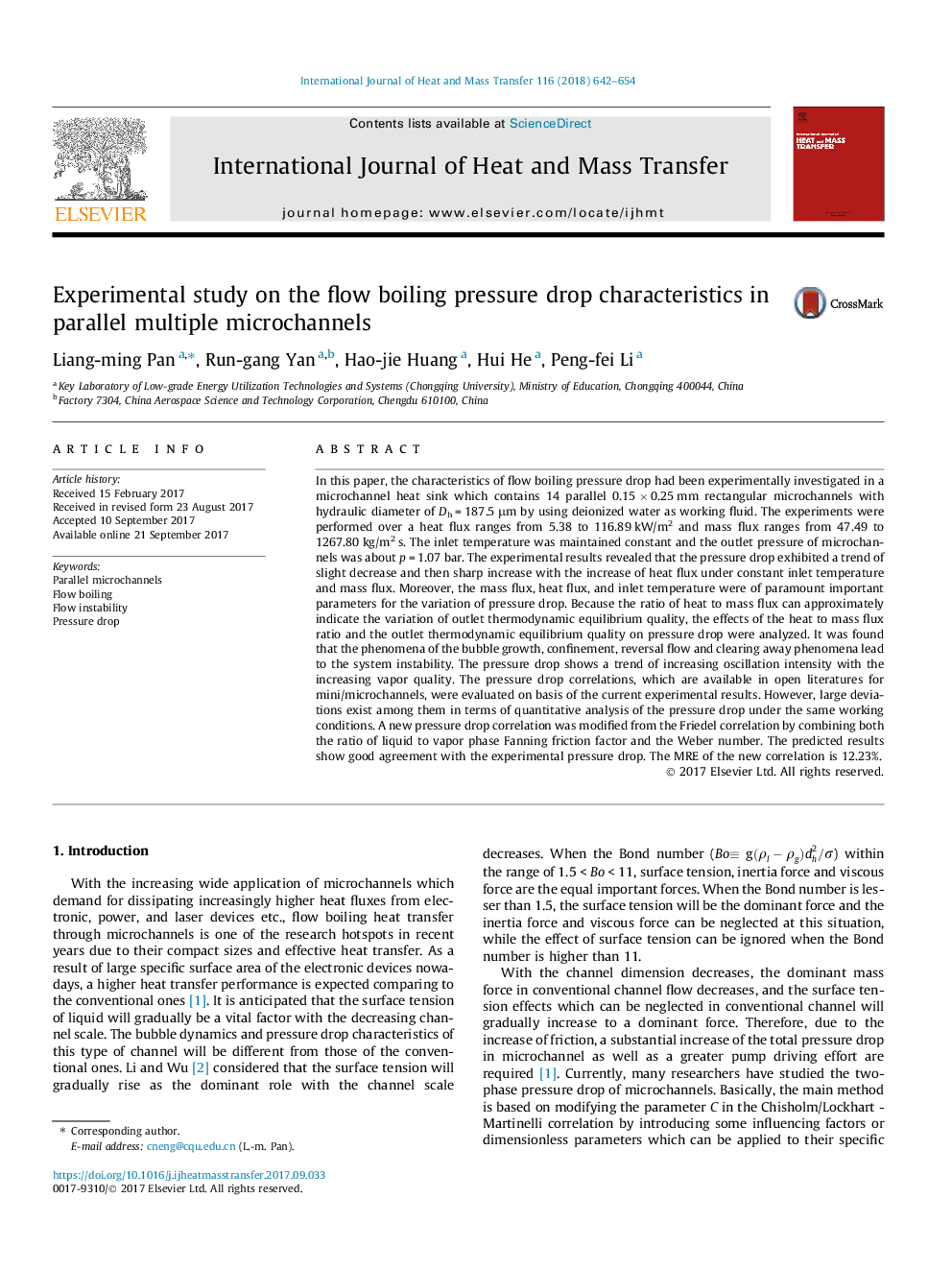| Article ID | Journal | Published Year | Pages | File Type |
|---|---|---|---|---|
| 4993788 | International Journal of Heat and Mass Transfer | 2018 | 13 Pages |
â¢Pressure drop inflection point phenomena occurred at certain conditions has been found.â¢Visual and bubble dynamics method have been used to analyze the oscillation of pressure drop.â¢A new pressure drop model has been proposed which agrees with experimental data well.
In this paper, the characteristics of flow boiling pressure drop had been experimentally investigated in a microchannel heat sink which contains 14 parallel 0.15 Ã 0.25 mm rectangular microchannels with hydraulic diameter of Dh = 187.5 μm by using deionized water as working fluid. The experiments were performed over a heat flux ranges from 5.38 to 116.89 kW/m2 and mass flux ranges from 47.49 to 1267.80 kg/m2 s. The inlet temperature was maintained constant and the outlet pressure of microchannels was about p = 1.07 bar. The experimental results revealed that the pressure drop exhibited a trend of slight decrease and then sharp increase with the increase of heat flux under constant inlet temperature and mass flux. Moreover, the mass flux, heat flux, and inlet temperature were of paramount important parameters for the variation of pressure drop. Because the ratio of heat to mass flux can approximately indicate the variation of outlet thermodynamic equilibrium quality, the effects of the heat to mass flux ratio and the outlet thermodynamic equilibrium quality on pressure drop were analyzed. It was found that the phenomena of the bubble growth, confinement, reversal flow and clearing away phenomena lead to the system instability. The pressure drop shows a trend of increasing oscillation intensity with the increasing vapor quality. The pressure drop correlations, which are available in open literatures for mini/microchannels, were evaluated on basis of the current experimental results. However, large deviations exist among them in terms of quantitative analysis of the pressure drop under the same working conditions. A new pressure drop correlation was modified from the Friedel correlation by combining both the ratio of liquid to vapor phase Fanning friction factor and the Weber number. The predicted results show good agreement with the experimental pressure drop. The MRE of the new correlation is 12.23%.
